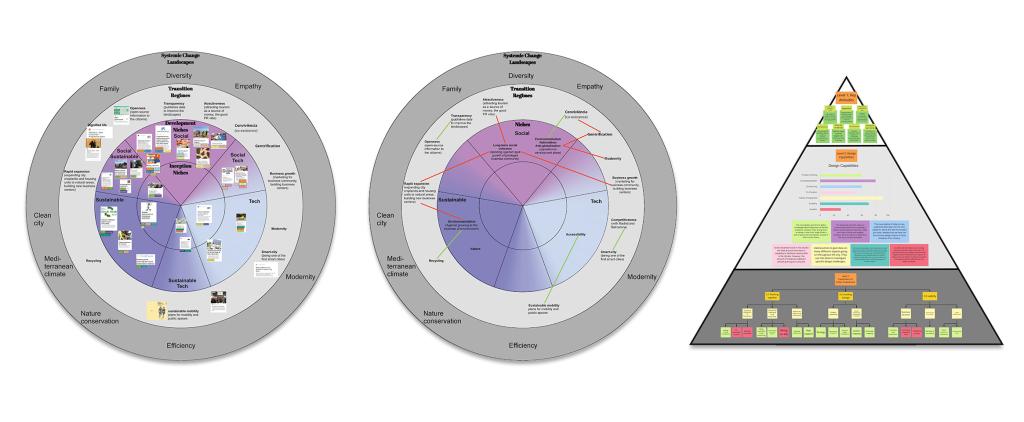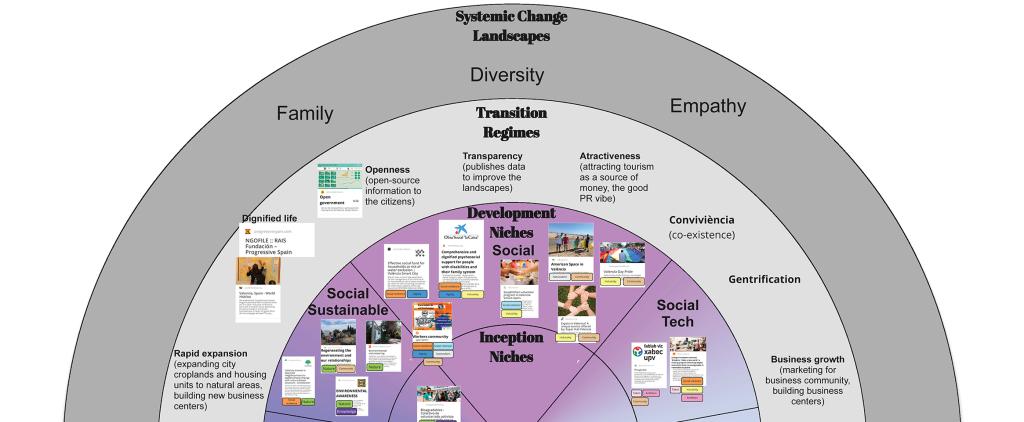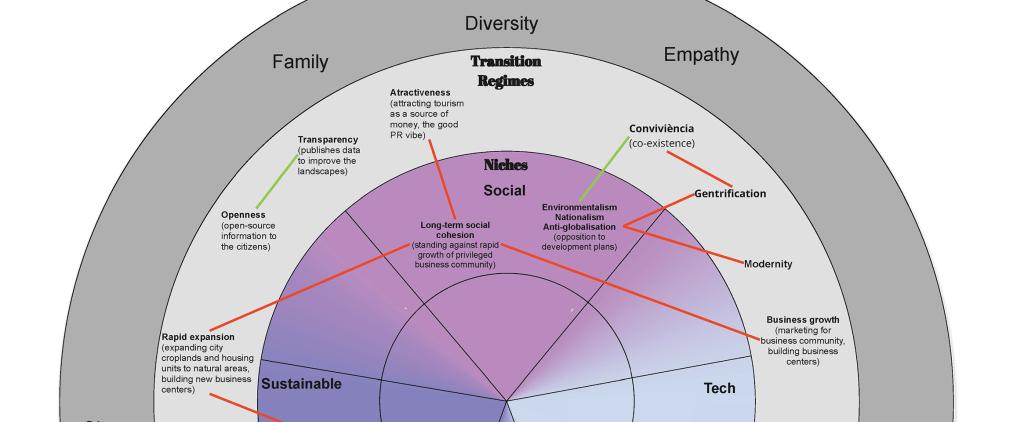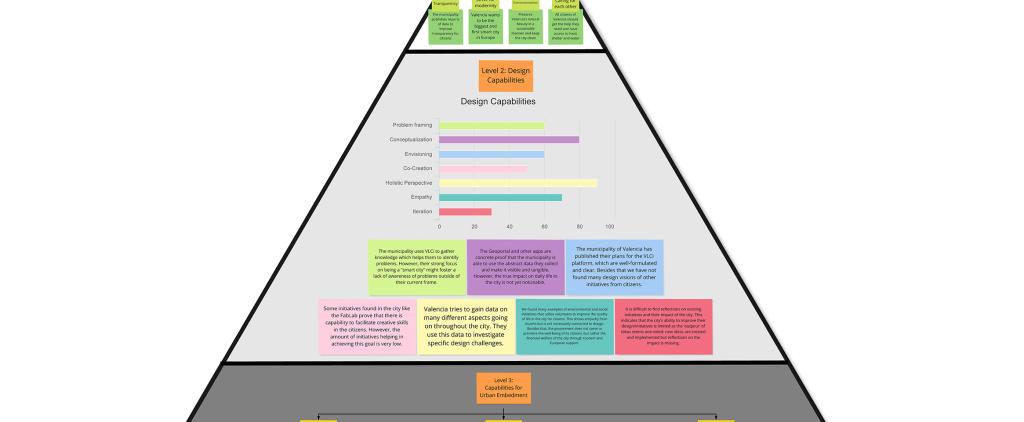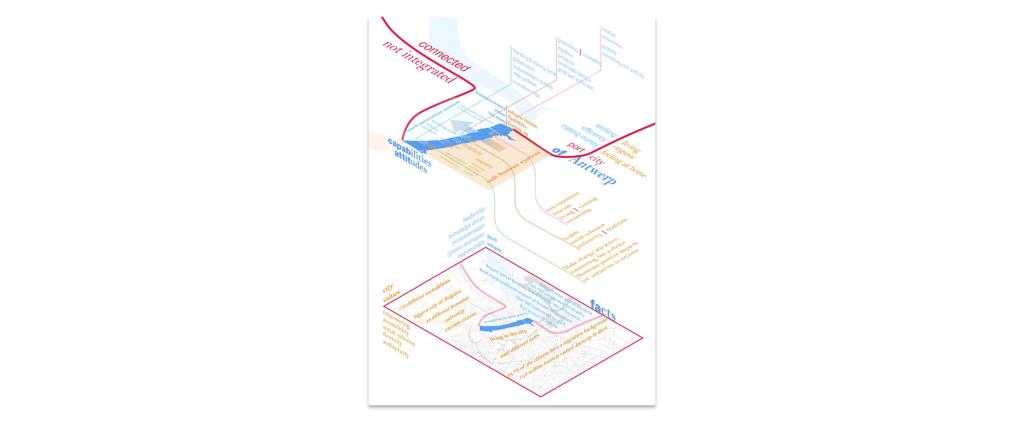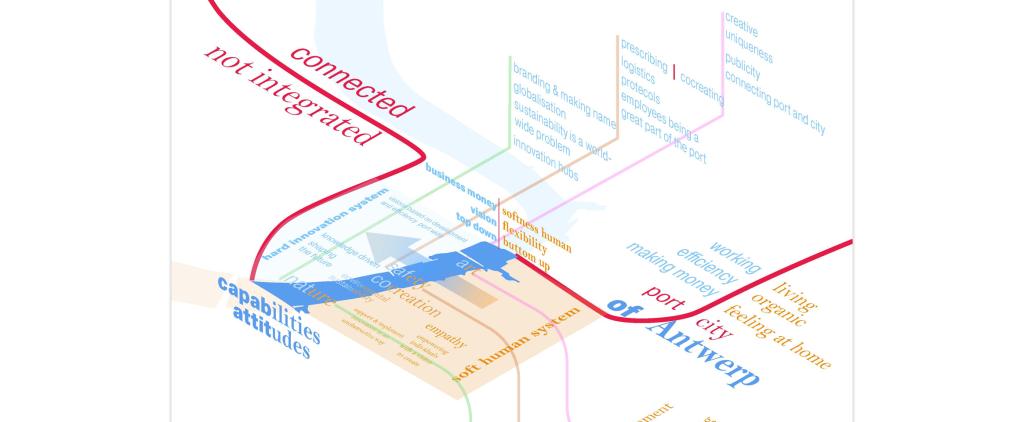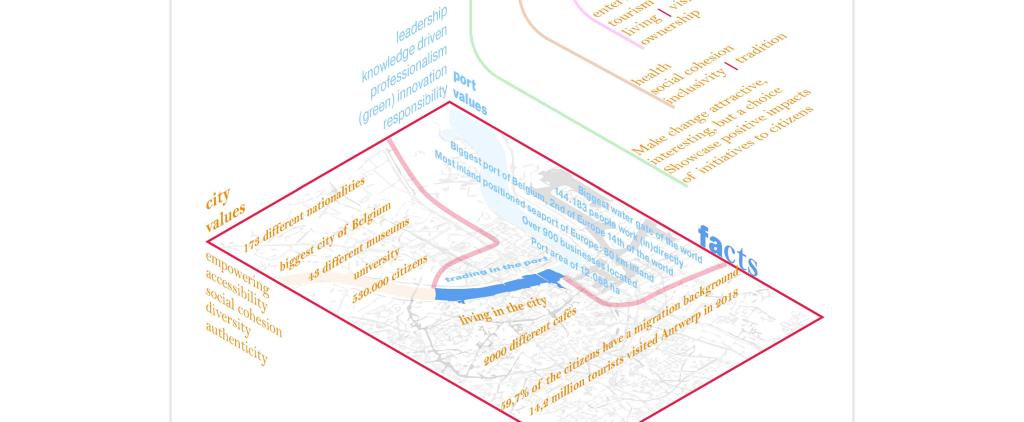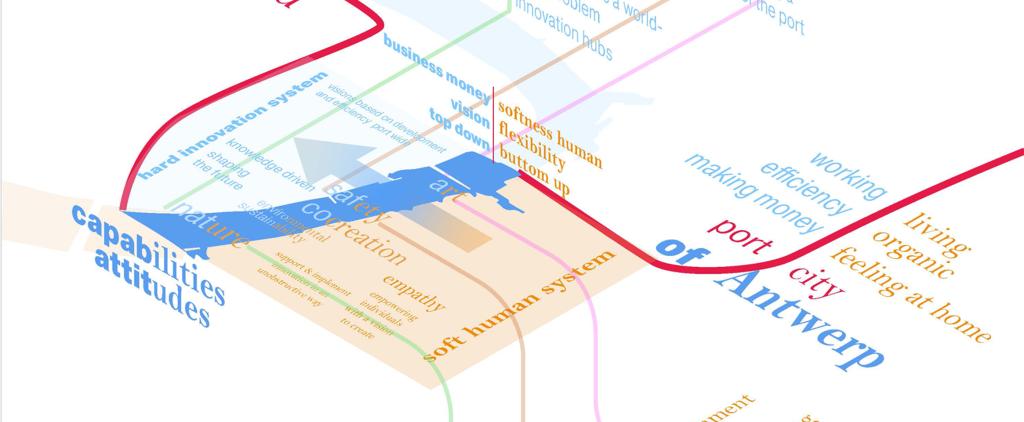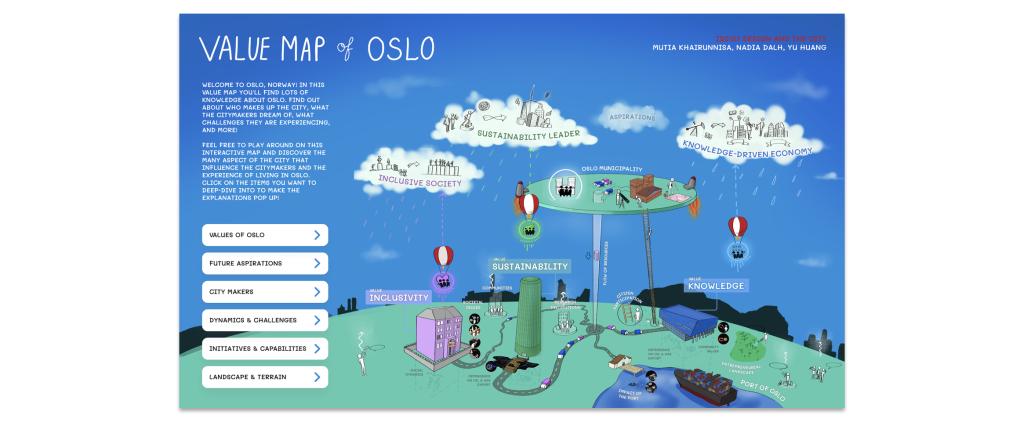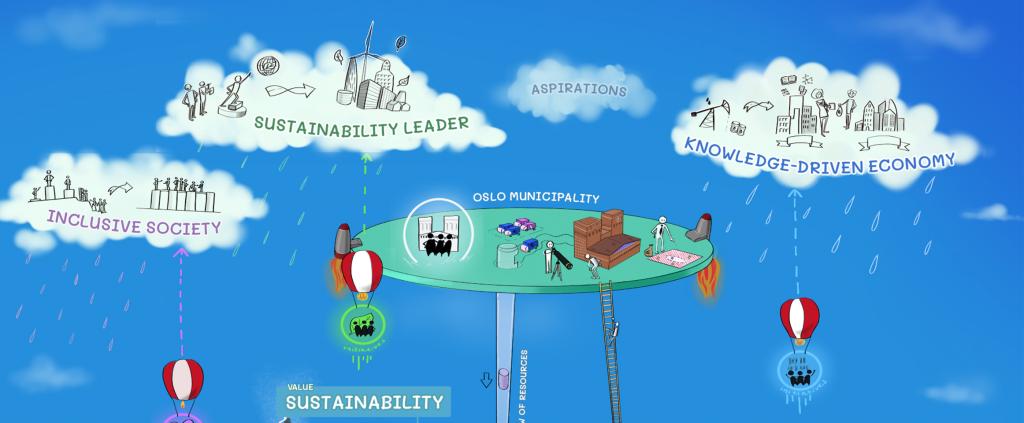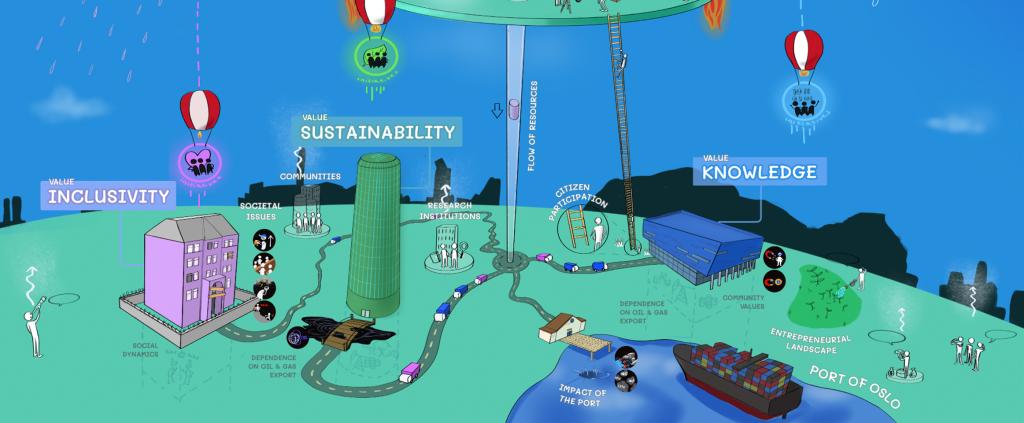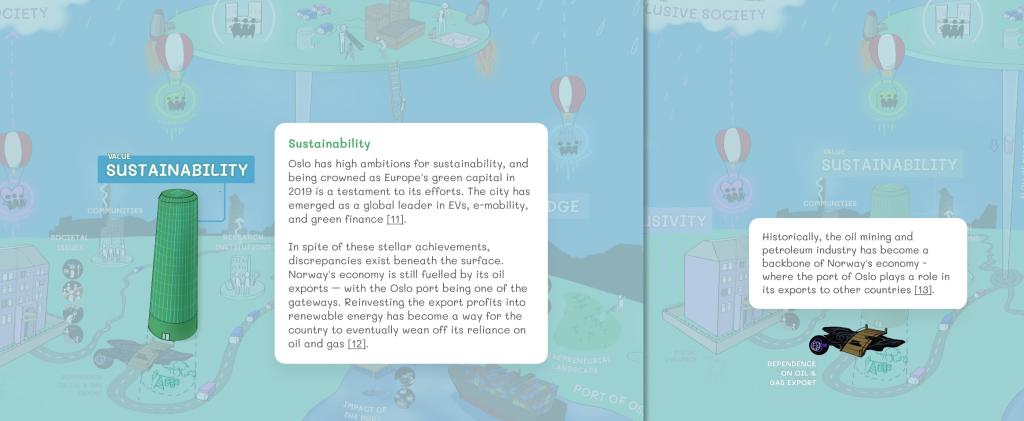Beyond being drivers of actions, values can also be seen as enablers for larger scale innovation. Once made explicit and shared among different groups of actors within society, they turn into unifying elements for larger coalitions towards a shared goal. Within complex contexts such as port cities, however, values and tensions among different stakeholder groups may not be always evident, losing potential of better supporting and informing innovation pathways in the city. To unveil values and tensions in port cities, and make them actionable tools for multi-stakeholder coalitions’ strategic dialogue, we have explored the development of research tools denominated Value Maps.
Value Maps are visual place-holders that represent the conditions, values and mindset of a port city in relation to the ecosystem of innovation initiatives that the city presents. The map also highlights the existing tensions among the different values present in port cities, for example between bottom-up initiatives and top-down infrastructures (government). In other words, a value map aims to support strategic dialogues, shared learning, and ultimately co-creation among different urban stakeholders in the city.
Value Mapping as a strategic tool has been developed within the elective course Design & the City (ID5127), at the faculty of Industrial Design Engineering, Delft University of Technology. Students developed a Value Map for a specific European Port City. In the cohort 2021-22 fall semester, 12 Value Maps have been created for either Port Cities around the North Sea (Aarhus, Antwerp, Bremen, Copenhagen, London, Oslo) or around the Mediterranean Sea (Athens, Barcelona, Dubrovnik, Marseille, Nice, Valencia). Below, a selection of Value Maps developed by students.

